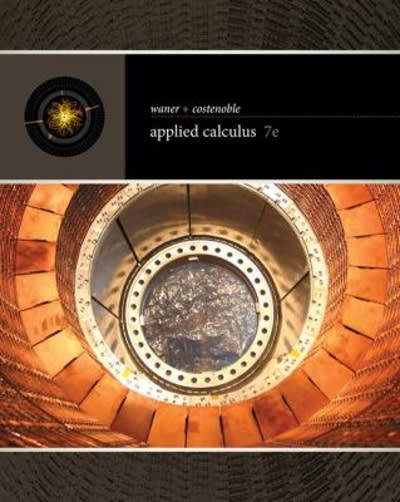Question
1.In a survey of 835 students at A College, 668 said they were employed and 167 said they were not employed. Construct a 95% confidence
1.In a survey of 835 students at A College, 668 said they were employed and 167 said they were not employed. Construct a 95% confidence interval estimate for the proportion of College students who are employed.
A. .764 < p > .836
B. .773 < p > .827
C. .777 < p > .823
D. .759 < p > .827
E. .737 < p > .872
2.In a survey of 835 students at a College, 668 said they were employed and 167 said they were not employed. Calculate the margin of error for a 99% confidence interval estimate for the proportion of college students who are employed.
A. .041
B. .036
C. .072
D. .027
E. .023
3.In a survey of 835 students at a College, 668 said they were employed and 167 said they were not employed. Construct a 95% confidence interval estimate for the proportion of college students who are employed and give the correct interpretation of the confidence interval
A. We are 95% confident that the interval from .764 < p > .836 contains the true population proportion of College students who are employed
B. We are 95% confident that the interval from .773 < p > .827 contains the true population proportion of College students who are employed
C. We are 95% confident that the true population proportion of College students who are employed will fall between .773 < p > .827
D. We are 95% confident that the interval from .777 < p > .823 contains the true population proportion of College students who are employed
E. We are 95% confident that the interval from .737 < p > .872 contains the true population proportion of College students who are employed
4.The difference between the sample proportion and the population proportion is know as:
A. sample error
B. sample proportion
C. population difference
D. population error
E. margin of error
F. critical value
5.True or False. A critical value is the number on the borderline separating sample statistics that are likely to occur from those that are unlikely to occur.
A. True
B. False
6.A researcher wants to estimate the percentage of teenagers in the US who support the legalization of recreational marijuana. What type of statistics should she employ to obtain the answer to her question?
A. Descriptive Statistics
B. Recreational Statistics
C. Inferential Statistics
D. Predictive Statistics
E. Experiential Statistics
7.True or False. Inferential statistics is used to test a claim or hypothesis about a sample.
A. True
B. False
Step by Step Solution
There are 3 Steps involved in it
Step: 1

Get Instant Access to Expert-Tailored Solutions
See step-by-step solutions with expert insights and AI powered tools for academic success
Step: 2

Step: 3

Ace Your Homework with AI
Get the answers you need in no time with our AI-driven, step-by-step assistance
Get Started


